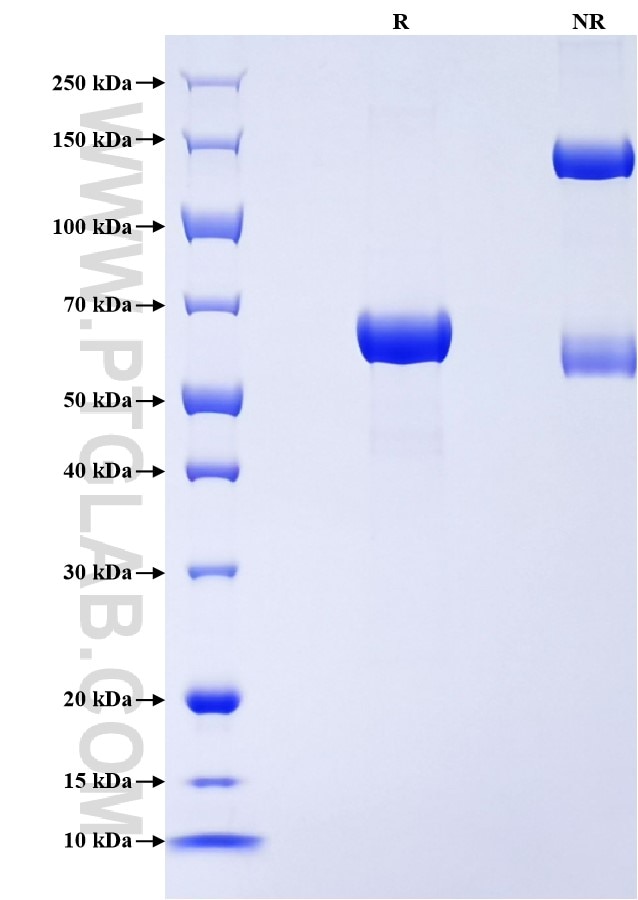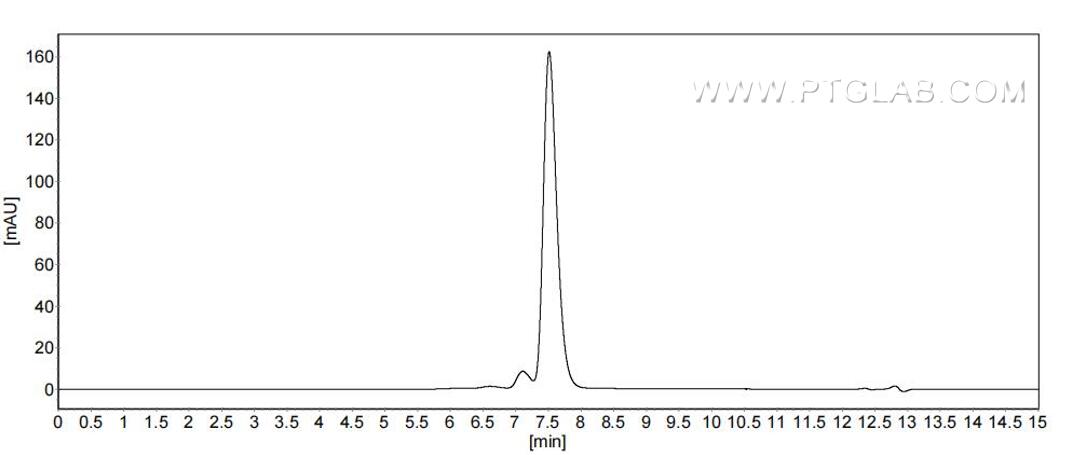Recombinant Human Carbonic Anhydrase 6/CA6 protein (rFc Tag) (HPLC verified)
Species
Human
Purity
>90 %, SDS-PAGE
>90 %, SEC-HPLC
Tag
rFc Tag
Activity
not tested
Cat no : Eg2963
Validation Data Gallery
Product Information
| Purity | >90 %, SDS-PAGE >90 %, SEC-HPLC |
| Endotoxin | <0.1 EU/μg protein, LAL method |
| Activity |
Not tested |
| Expression | HEK293-derived Human Carbonic Anhydrase 6 protein Gln18-Asn308 (Accession# P23280-1) with a rabbit IgG Fc tag at the C-terminus. |
| GeneID | 765 |
| Accession | P23280-1 |
| PredictedSize | 59.6 kDa |
| SDS-PAGE | 58-68 kDa, reducing (R) conditions |
| Formulation | Lyophilized from 0.22 μm filtered solution in PBS, pH 7.4. Normally 5% trehalose and 5% mannitol are added as protectants before lyophilization. |
| Reconstitution | Briefly centrifuge the tube before opening. Reconstitute at 0.1-0.5 mg/mL in sterile water. |
| Storage Conditions |
It is recommended that the protein be aliquoted for optimal storage. Avoid repeated freeze-thaw cycles.
|
| Shipping | The product is shipped at ambient temperature. Upon receipt, store it immediately at the recommended temperature. |
Background
CA6 (Carbonic anhydrase VI ) is a member of CA family proteins that play a central role in pH regulation and electrolyte balance. CA6 is also known as gustin, is a zinc-containing secreted protein which catalyzes the hydration of carbon hydroxide in saliva. CA6 is specifically expressed in the salivary gland of a number of mammalian species. The amino acid sequences are highly conserved across the species. And it was reported that decreasing of CA6 protein was associated with loss of taste and pathological morphology of taste buds.
References:
1. Choi JH, Lee J, etal. (2017) Oncotarget. 28;8(13):21253-21265. 2. Thatcher BJ, Doherty AE, etal. (1998) Biochem Biophys Res Commun. 29;250(3):635-41. 3. Li Y, Pan J. (2024) Clin Oral Investig. 30;28(9):508. 4. Nicolazzi C. (2020) Mol Cancer Ther. 19(8):1660-1669.

